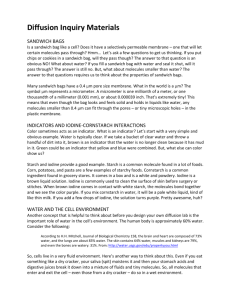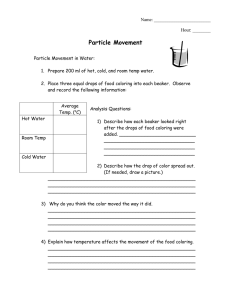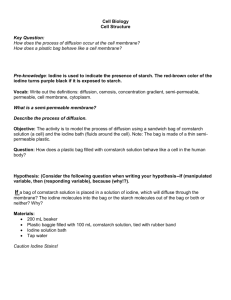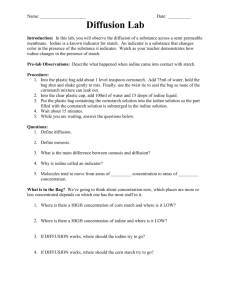Diffusion Lab: Iodine & Starch Experiment
advertisement
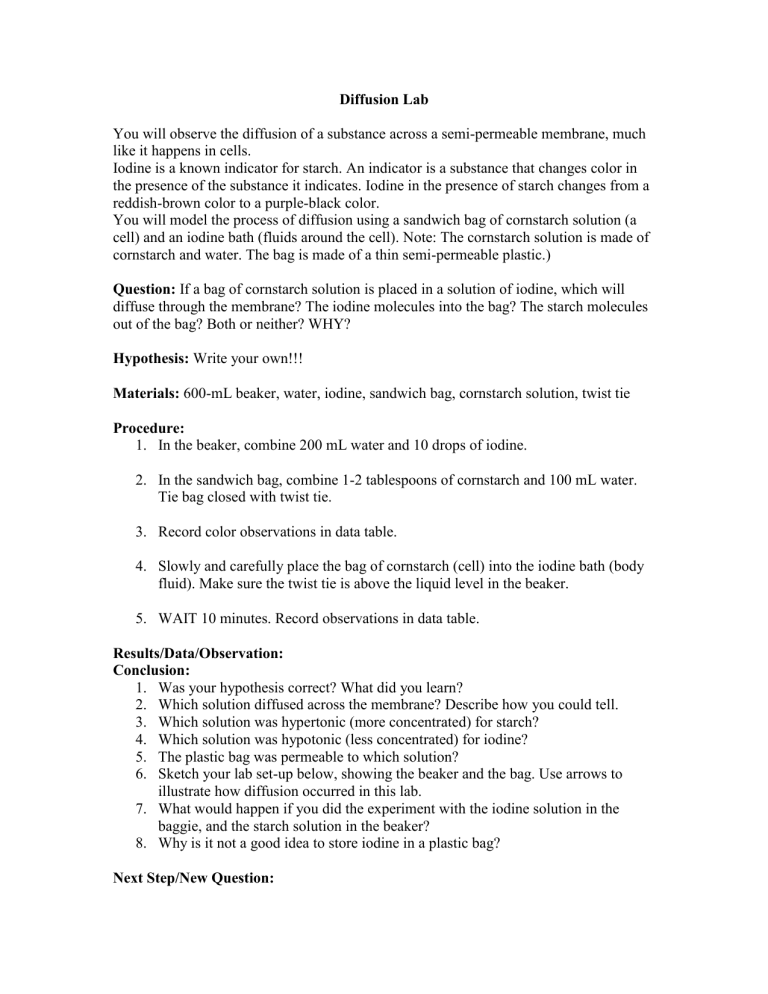
Diffusion Lab You will observe the diffusion of a substance across a semi-permeable membrane, much like it happens in cells. Iodine is a known indicator for starch. An indicator is a substance that changes color in the presence of the substance it indicates. Iodine in the presence of starch changes from a reddish-brown color to a purple-black color. You will model the process of diffusion using a sandwich bag of cornstarch solution (a cell) and an iodine bath (fluids around the cell). Note: The cornstarch solution is made of cornstarch and water. The bag is made of a thin semi-permeable plastic.) Question: If a bag of cornstarch solution is placed in a solution of iodine, which will diffuse through the membrane? The iodine molecules into the bag? The starch molecules out of the bag? Both or neither? WHY? Hypothesis: Write your own!!! Materials: 600-mL beaker, water, iodine, sandwich bag, cornstarch solution, twist tie Procedure: 1. In the beaker, combine 200 mL water and 10 drops of iodine. 2. In the sandwich bag, combine 1-2 tablespoons of cornstarch and 100 mL water. Tie bag closed with twist tie. 3. Record color observations in data table. 4. Slowly and carefully place the bag of cornstarch (cell) into the iodine bath (body fluid). Make sure the twist tie is above the liquid level in the beaker. 5. WAIT 10 minutes. Record observations in data table. Results/Data/Observation: Conclusion: 1. Was your hypothesis correct? What did you learn? 2. Which solution diffused across the membrane? Describe how you could tell. 3. Which solution was hypertonic (more concentrated) for starch? 4. Which solution was hypotonic (less concentrated) for iodine? 5. The plastic bag was permeable to which solution? 6. Sketch your lab set-up below, showing the beaker and the bag. Use arrows to illustrate how diffusion occurred in this lab. 7. What would happen if you did the experiment with the iodine solution in the baggie, and the starch solution in the beaker? 8. Why is it not a good idea to store iodine in a plastic bag? Next Step/New Question:
